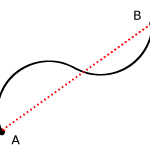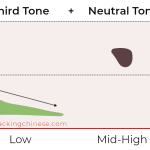Recent articles about how to learn Mandarin Page 13
-
Beyond tīng bu dǒng, part 3: Using what you already know to aid listening comprehension in Chinese
Listening comprehension is not only about extracting information from the spoken Mandarin you hear, it’s also about applying what you already know and expect.
Read → -
Standard pronunciation in Chinese and why you want it
What should you learn if your friends and your teacher tell you different things? How should you navigate the space between standard pronunciation and regional accents? Standard pronunciation will help you communicate, but a regional accent might help you fit in.
Read → -
How to study Chinese when you don’t feel like it
The more you study the better, but what if you don’t feel like studying at the moment? Instead of giving up, gear down and find ways of learning Chinese that suit your current state of mind.
Read → -
Are there any shortcuts for learning Chinese?
Some say that there are no shortcuts for learning Chinese, others say that there are many. So which one is it, are there any shortcuts for learning Chinese or not?
Read → -
Learning the neutral tone in Mandarin
The neutral tone in Mandarin Chinese can be tricky to learn. How is it pronounced? Is it a fifth tone? And how do you know when it should be used?
Read → -
Beyond tīng bu dǒng, part 2: From sound to meaning in Mandarin
Listening comprehension in Mandarin is complex, and the more I learn about it, the more amazing it seems that we’re able to understand anything at all.
Read → -
Beyond tīng bu dǒng, part 1: A guide to Chinese listening comprehension
Listening comprehension is essential when learning Chinese, but if we want to improve, we need to move beyond tīng bu dǒng and identify what the problem really is.
Read → -
Kickstart your learning with the Skritter Character Course
What’s the best way to learn Chinese characters as a beginner? The Skritter character course is my best attempt at answering that question.
Read → -
Take responsibility for your Chinese learning now
You should be responsible for your own learning, and if you outsource that to someone else, the results might be disastrous. This might sound obvious, but I think the problem is widely overlooked, especially by students enrolled in language courses.
Read → -
Hacking Chinese Podcast two-year anniversary Q&A
This is a Q&A to mark the second anniversary of the Hacking Chinese Podcast! How do you stop translating in your head? Is it worthwhile to study a Pinyin chart? And how do you learn traditional characters after learning simplified?
Read →









